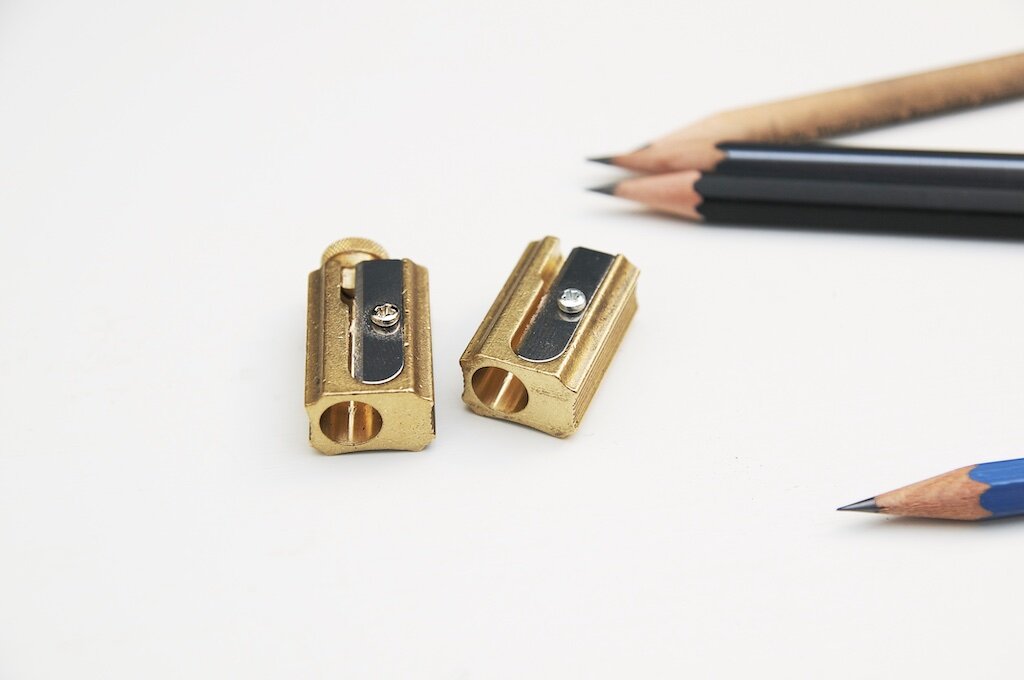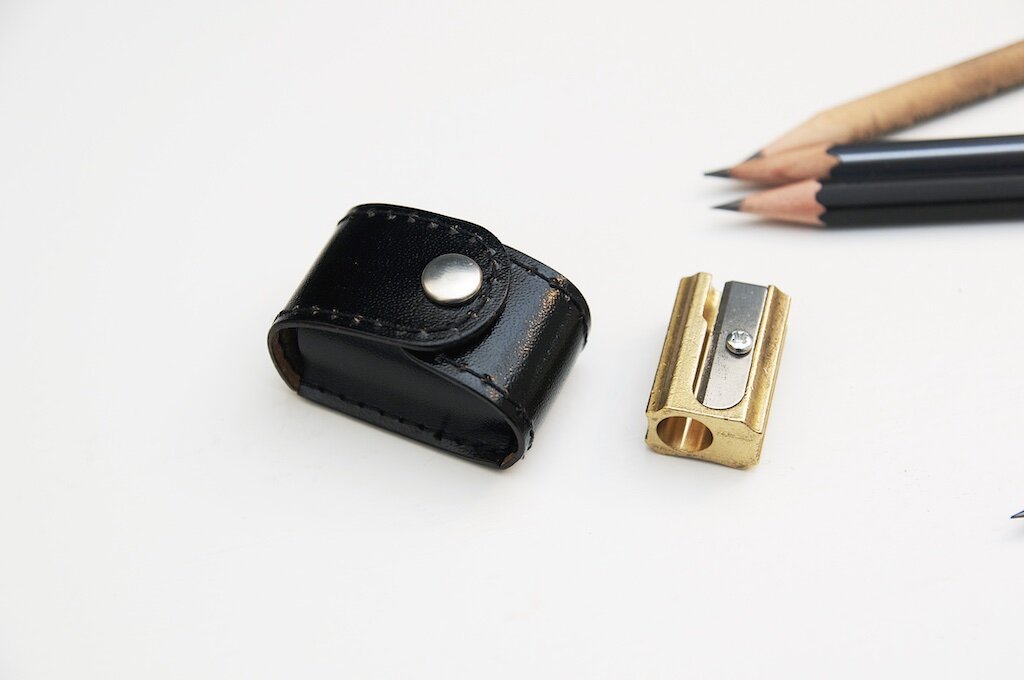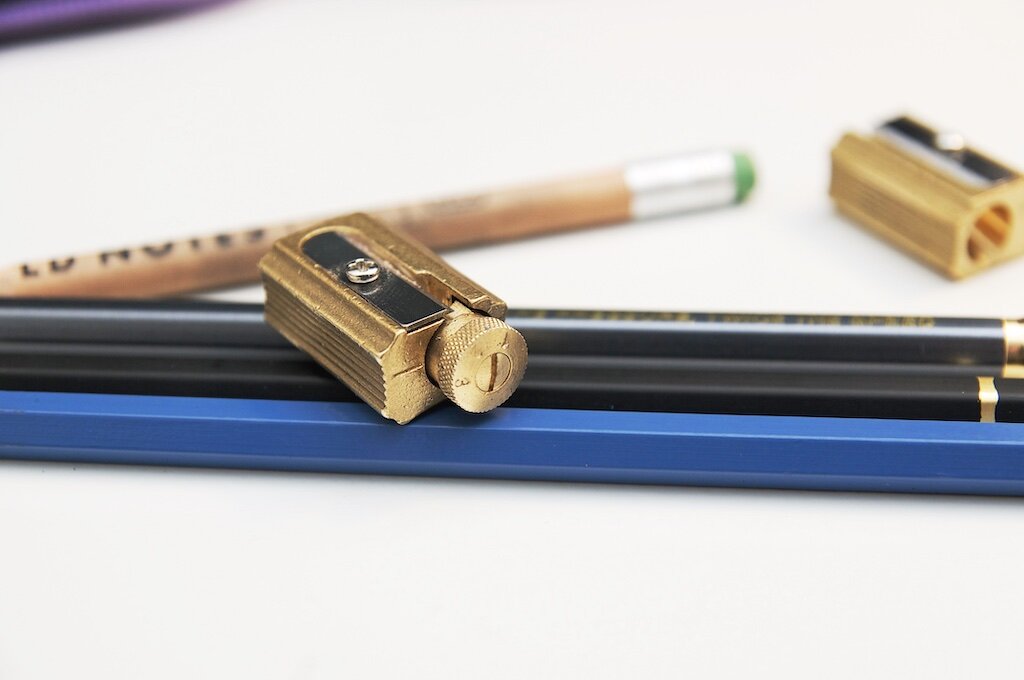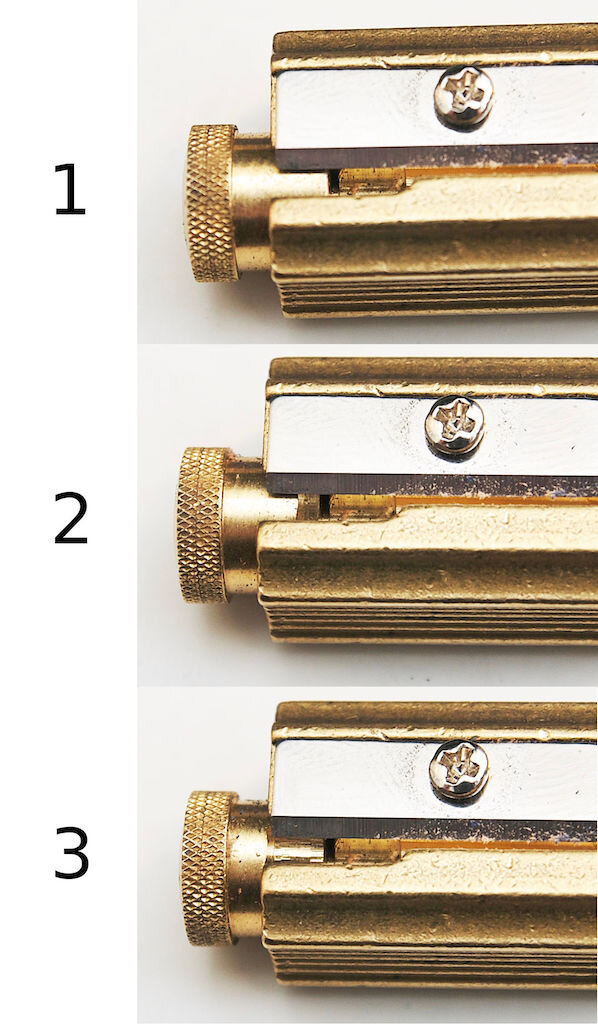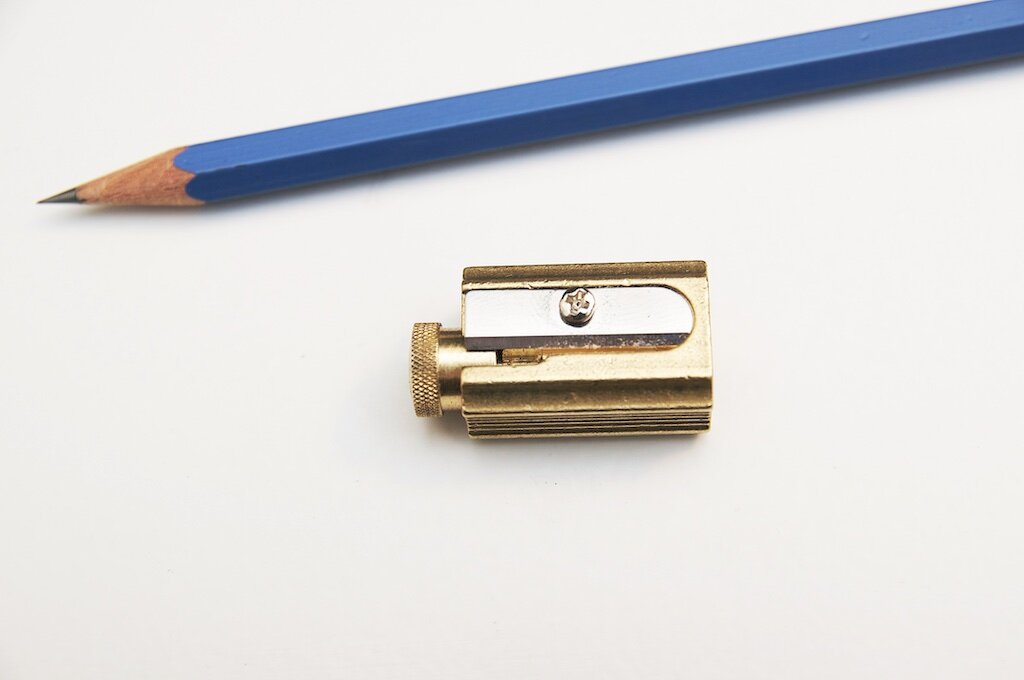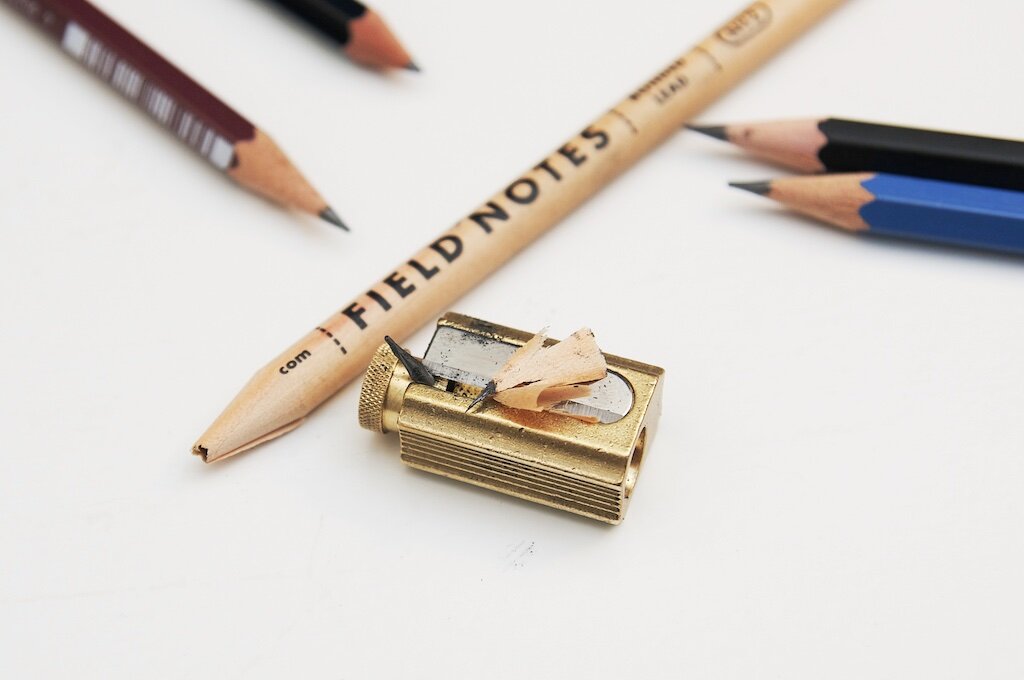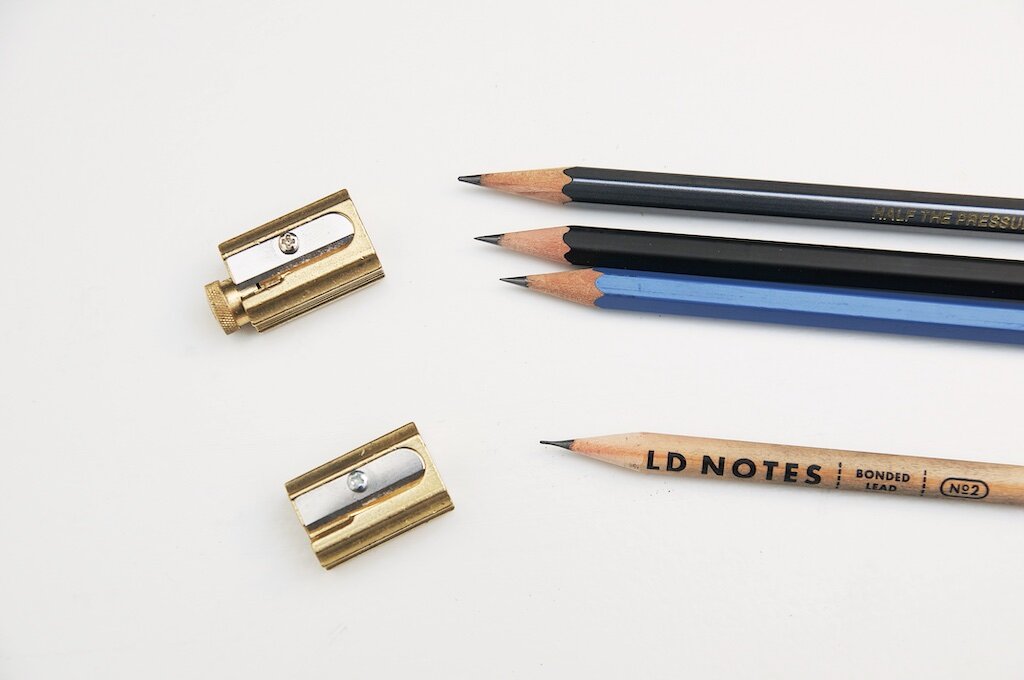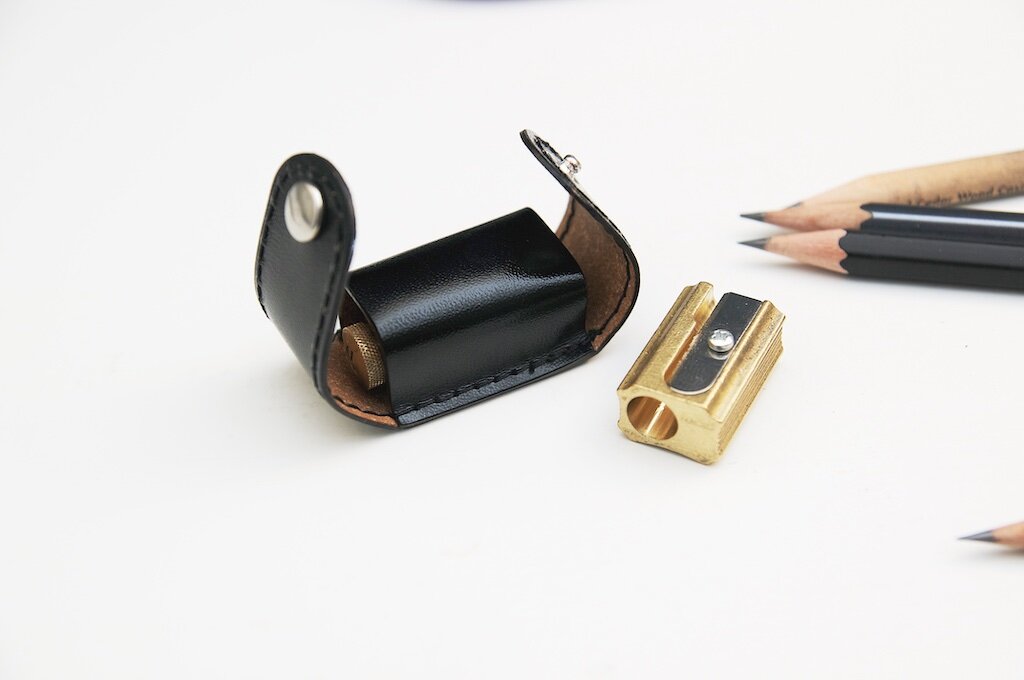As my pencil month experiment winds down, I’ve been thinking about some of my favorite products I’ve had in use. And, if I took some of these products and put them together as a kit, what would it include, and how would I set it up? Here are the options I settled on for my personal pencil kit:
A writing pencil. This should be the core of your setup, and your most-used pencil. What pencil do you want to use the majority of the time? For me, that means a dark, firm core with solid point retention. Bonus points for looks. The Mitsubishi 9850 comes to mind here, as does the Blackwing Eras - two of my favorite pencils to just pick up and write. There are no questions here, only solid performance every time I pick it up.
A sketching pencil. This could go a few different ways depending on your needs, but for me, it means something on the soft side, or B side, of the graphite scale. For example, the Tombow Mono KM-KKS 4B, which features a much softer core than the writing options above, but one that is rock solid for such a soft, dark pencil.
A detail pencil. This is my H side option. I’ve toned it down over the years from the 4H range to 2H, which is still plenty aggressive for what I need. This Tombow-made Tajima 2H - for hi-precision drafting, it says - is a perfect choice.
A fun pencil. Do you like a certain character that you can buy pencils for? A wild color? A unique material, either for the wood barrel or core? I always want to have some fun in any kit, whether it is my favorite Aggretsuko pencil, or the Caran d’Ache Stinkwood, which is always a good time.
A color pencil. Or three. Honestly, you can never have too many color options. A magic pencil works wonderfully here, as do the two-sided pencils, like the classic Mitsubishi Vermillion/Prussian Blue, or my favorite, The Editor, a collaboration between Caran d’Ache and the artist formally known as CW Pencil Enterprise.
A self-contained sharpener. I don’t know about you, but I don’t want to make a mess unless I am prepared to make a mess. That means that unless I have a trash can handy to sharpen over, I want the pencil shavings to be stored inside the sharpener until I can empty them safely. The KUM Long Point is my favorite option for this. If you don’t care about containing the shavings, then you could opt for the open-blade KUM Masterpiece. The Blackwing One-Step Long Point Sharpener does do a fantastic job of sharpening and containing the shavings, as long as you get a good blade on order.
An eraser. This is a do as I say, not as I do moment. I don’t use erasers, even the ones attached to the pencil. I scratch out and move on, as if I were using a pen. That said, I do like having one on hand just in case. Tombow makes the best in this category, or you can toss in something cool like this Seed Clear Radar eraser, which comes in two sizes: small, and smaller.
A pencil cap. I mean, we are nerds about this stuff, right? I don’t put pencil caps on all of the pencils I carry (that’s why I carry a sharpener,) but I will usually put it on my writing pencil because it is likely the most used pencil. I feel better knowing that if I am banging it around the most that it is protected when I need to pick it up and write quickly.
Pencil paper. What is pencil paper? Take what you like for fountain pens, and choose the exact opposite. Ok, maybe that’s a bit much, but you don’t necessarily want a smooth, slow-drying paper for graphite. The paper doesn’t have to be toothy, but you want some grab from the pencil tip so that it leaves a solid and consistent mark. Field Notes fit the kit size perfectly.
A pouch. Is this the toughest part of the pencil kit? I think so. I made my perfect pencil pouch when Nock Co. was going (R.I.P.) which was exceedingly simple. It didn’t need to hold too much, but it needed to be long enough to hold an unsharpened Blackwing. That was the measurement we used because Blackwing’s are the longest pencil on the market, and longer than most standard pencils off the shelf. Rickshaw makes a nice option for this.
What else? I think I’ve covered my bases here - what else do you put in your pencil kit? Let me know in the comments below.
Enjoy reading The Pen Addict? Then consider becoming a member to receive additional weekly content, giveaways, and discounts in The Pen Addict shop. Plus, you support me and the site directly, for which I am very grateful.
Membership starts at just $5/month, with a discounted annual option available. To find out more about membership click here and join us!
















